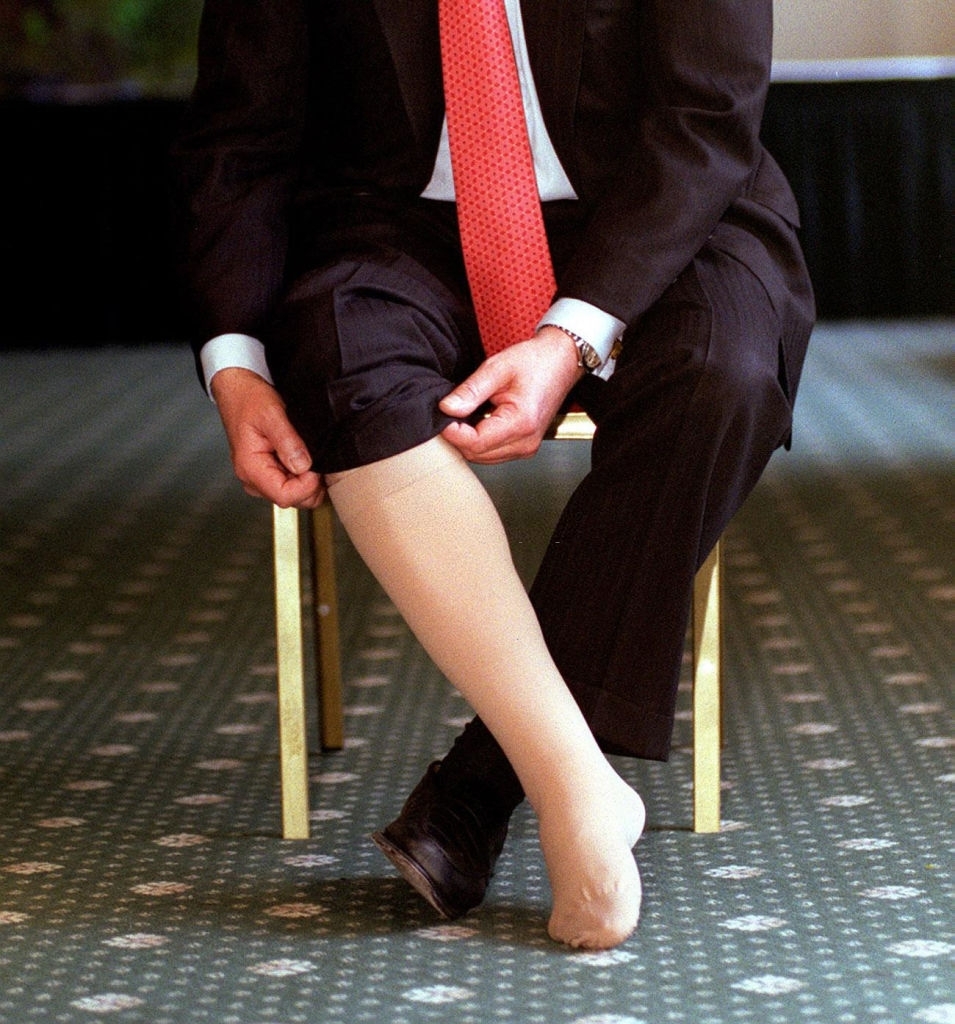Flying can sometimes be a challenge as we fit ourselves in a rigid seat that offers little to no legroom. Sitting for hours is especially uncomfortable and oftentimes painful as the blood flow through the legs is restricted. If you are experiencing a numbing and painful sensation in your legs, you should make sure it’s not a health condition involved such as DVT or deep vein thrombosis. DVT is a condition where a blood clot develops in your major veins, including your legs and thighs.
No need to worry though as there are things you can do to make your flight safer and more comfortable in case you suffer from DVT or leg swelling. One of those ways is using compression socks.
What are Compression Socks?
Compression socks are garments that are worn around the leg for limb compression.
They are used not only to increase blood circulation but also to prevent blood clot formation and ulcers of the lower legs. Compression stockings are made of strong elastics to put pressure on the legs, ankles, and feet. A compression stocking is tightest at the ankles and less constrictive toward the knees and thighs.
Using Compression Socks for Flights
Using compression socks during a long flight can significantly improve your flight experience. It is important to note and follow the proper time to wear your compression socks.
During long flights, legs tend to become uncomfortable, numb, or sometimes painful because of the position you are sitting in, and the long hours of staying in that position.
While wearing compression socks for a flight can help you ease the discomfort of flights, it is important to note when to put them on.
When to Put On Compression Socks
Travelers usually wear compression socks at the airport which could decrease the effectiveness of compression socks. It would be better to put compression socks first thing in the morning before your flight. This is better because your legs are not yet swollen and are still relaxed. Also, it gives time for your system to adapt to the compression from your socks.
When to Remove Compression Socks
Do not remove your compression socks as soon as your plane lands at your destination. You may end up getting your legs even more swollen. Ideally, you should remove your compression socks when you arrive at your hotel or accommodation. This will help your legs adapt better to the removal of the compression socks.
What are the different kinds of compression socks?
While it is important to know when to put them on and off, you also have to consider the different kinds, sizes, and strengths of compression socks in the market that will benefit you.
Compression stockings should be fitted before purchasing because sizes and compression strength vary. To find the right fit for you, you need to get a calf measurement. Compression stockings should be measured around the ankle and around the calf.
Types of compression stockings
Anti-embolism stockings
This type is made for those who cannot move freely, like for patients who just had a surgery or those who are bed confined.
Non Medical support hosiery
This type of stocking is easy to find. You will not be needing any prescription when you decide to purchase it. It includes an elastic support hose and flight socks. It is usually marketed as a relief for tired and painful legs and can ease varicose vein pain.
Graduated compression stockings
Graduated compression stockings provide high-level compression. They are fitted professionally mostly for medical specifications and purposes.
Take a look at tips on getting through a flight with DVT
Suffering from a medical condition that causes swelling in your legs? Have you recently had DVT? Find out what medical conditions should make you rethink your next flight.
